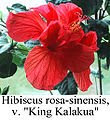
Irises are wonderful garden plants. As the word Iris means rainbow, irises come in so many colors: blues and purples, whites and yellows, pinks and oranges, browns and reds, and even blacks. The genus Iris has about 200 species and is native of North Temperate regions of the world.
The habitat of iris also varies a lot. Some irises grow in deserts, some in swamps, some in the cold far north, and many in temperate climates. Bearded Iris and Siberian Iris are the two most common types of iris grown.
Facts about Iris
- Irises come in many forms, shapes, colors and sizes and the sword-like foliage is attractive when the plant is not in bloom.
- Iris are among the best-known and loved among garden plants. Iris are hardy herbaceous perennials.
- The genus Iris is a large genus of bulbous and rhizomatous perennials.
- The Iris was named after the Goddess of the rainbow because of it's many colours.
- A flower on the Sphinx is considered to be an Iris, and another appears on a bas-relief of the time of the 18th Egyptian dynasty.
- Pliny also knew the Iris and praised its medicinal virtues.
- The Iris was also a favourite flower of the Moslems, who took it to Spain after their conquest in the 8th century.
Medicinal and Perfumery Uses of Iris
The juice of the fresh roots of Iris, bruised with wine, has been employed as a strong purge of great efficiency in dropsy. The juice of Iris is also sometimes used as a cosmetic for the removal of freckles from the skin.
The fresh root of Iris germanica is a powerful cathartic, and for this reason its juice has been employed in dropsy. It is chiefly used in the dry state, being said to be good for complaints of the lungs, for coughs and hoarseness, but is now more valued for the pleasantness of its violet-like perfume than for any other use.























